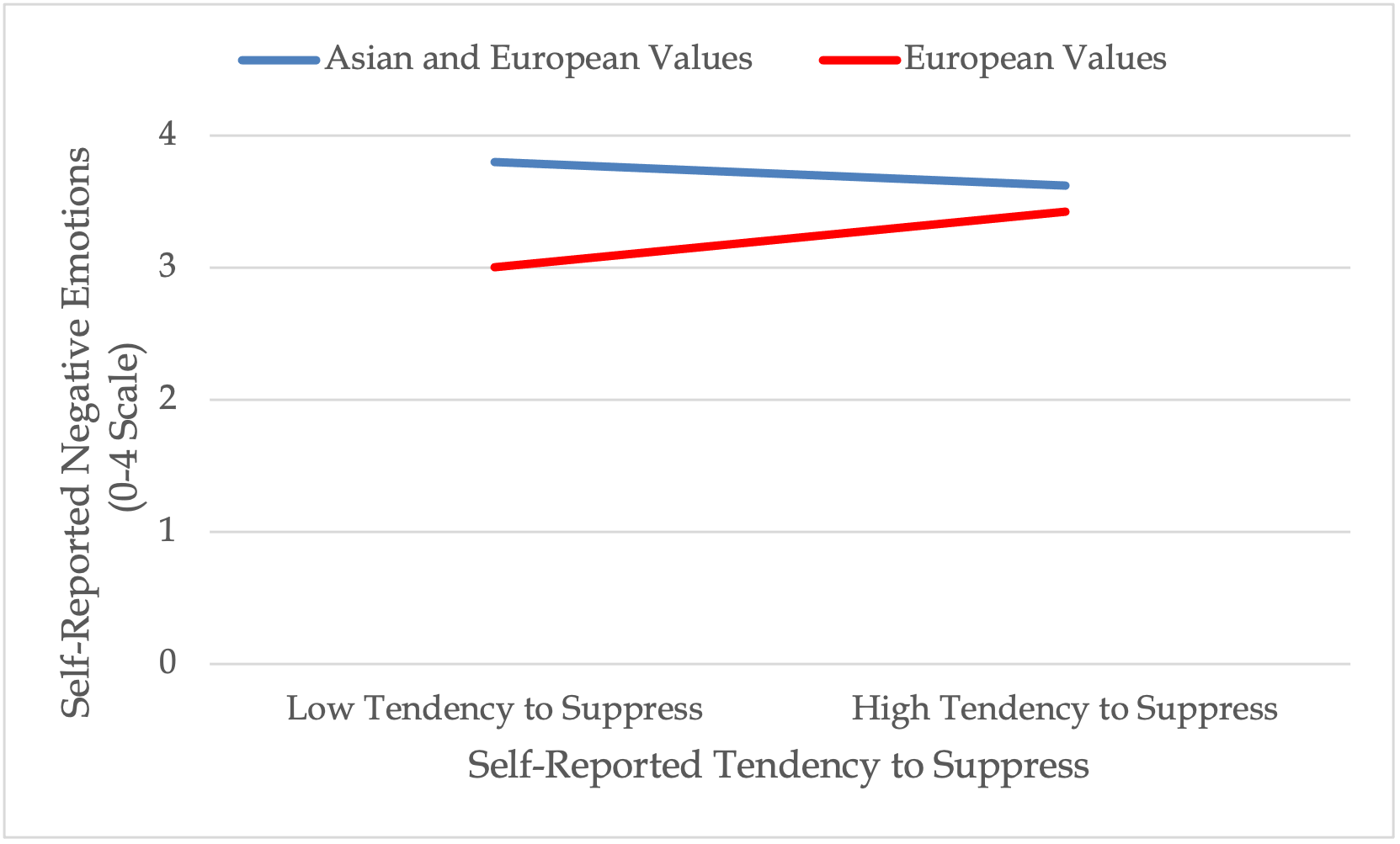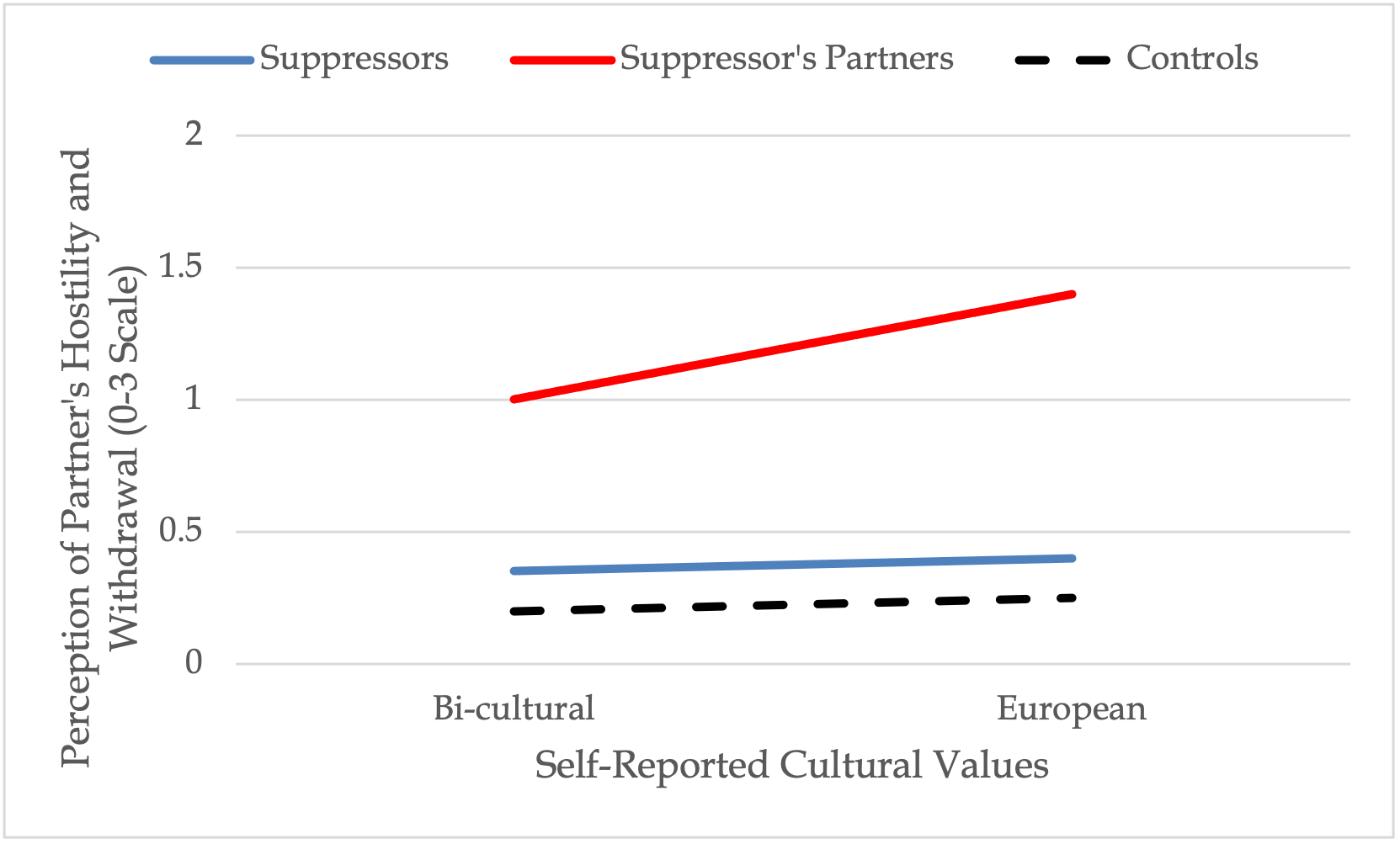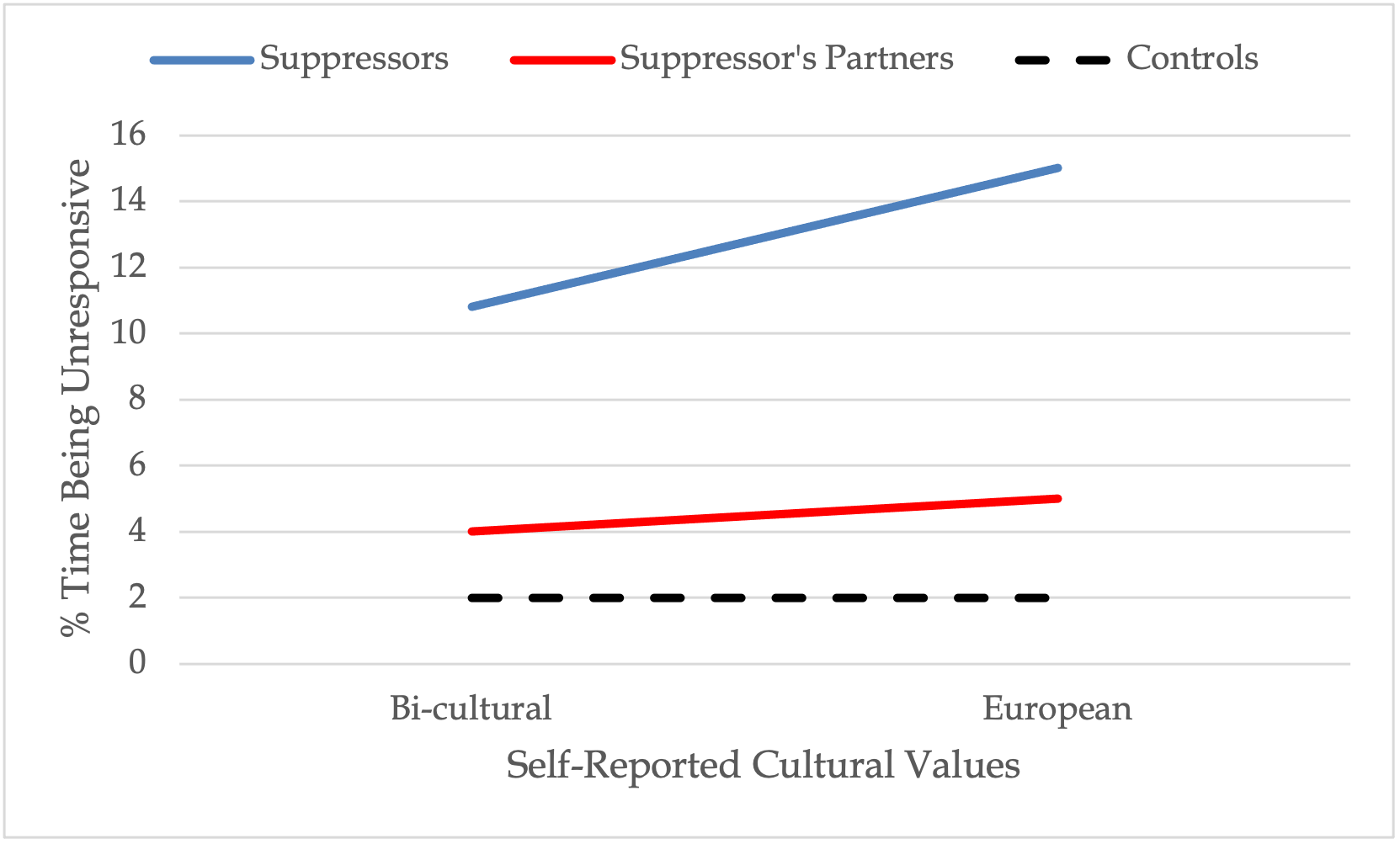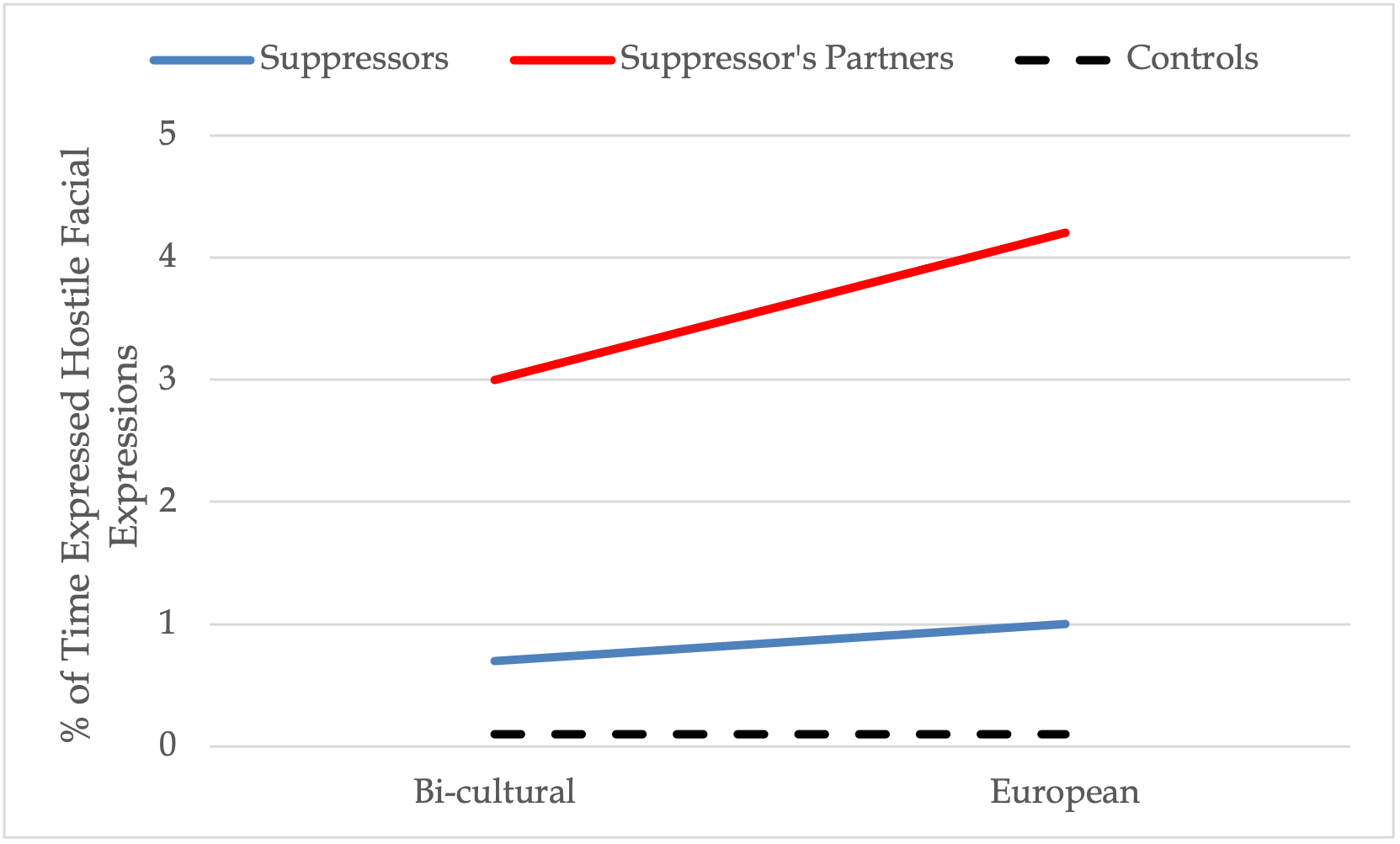Chapter 14 – Emotion Regulation
Cultural Differences in the Consequences of Expressive Suppression
Figure 20
Influence of Trait Suppression and Self-Reported Cultural Values on Tendency to Experience Negative Emotions

Long Description
The image is a line graph depicting the relationship between “Self-Reported Negative Emotions” and “Self-Reported Tendency to Suppress.” The y-axis, labeled “Self-Reported Negative Emotions (0-4 Scale),” ranges from 0 to 4. The x-axis is labeled “Self-Reported Tendency to Suppress,” with markers for “Low Tendency to Suppress” and “High Tendency to Suppress.” There are two lines on the graph: a blue line labeled “Asian and European Values,” which starts higher and slopes slightly downward, and a red line labeled “European Values,” which starts lower and slopes slightly upward. The blue line represents consistently higher values compared to the red line.
Adapted from “Emotion Regulation and Culture: Are the Social Consequences Oof Emotion Suppression Culture-Specific?” by E.A. Butler, T.L. Lee, T. L., and J.J. Gross, 2007, Emotion, 7(1), p. 36 (https://doi.org/10.1037/1528-3542.7.1.30) Copyright 2007 by the American Psychological Association.
Figure 21
Interaction between Cultural Values and Regulation Group on Perceptions of Hostility and Withdrawal of Partners

Long Description
The image is a line graph depicting the perception of partner’s hostility and withdrawal on a 0-3 scale, plotted against self-reported cultural values labeled as Bi-cultural and European. The vertical axis represents the scale from 0 to 2, while the horizontal axis shows the cultural values categories. Three distinct lines represent different groups: a solid blue line for Suppressors, a solid red line for Suppressor’s Partners, and a dashed black line for Controls. The red line runs diagonally upward, indicating a rise in perception from Bi-cultural to European values. The blue line is relatively flat with a slight increase. The black dashed line remains mostly unchanged across the cultural values.
Adapted from “Emotion Regulation and Culture: Are the Social Consequences Oof Emotion Suppression Culture-Specific?” by E.A. Butler, T.L. Lee, T. L., and J.J. Gross, 2007, Emotion, 7(1), p. 42 (https://doi.org/10.1037/1528-3542.7.1.30) Copyright 2007 by the American Psychological Association.
Figure 22
Interaction between Cultural Values and Regulation Group on Percent of Time Expressing Unresponsive Facial Expressions

Long Description
The image is a line graph illustrating the relationship between self-reported cultural values and the percentage of time being unresponsive. The x-axis represents self-reported cultural values, ranging from “Bi-cultural” to “European.” The y-axis shows the percentage of time being unresponsive from 0 to 16. Three lines are plotted: a blue line for “Suppressors,” a red line for “Suppressor’s Partners,” and a black dashed line for “Controls.” The blue line starts at approximately 11% for Bi-cultural and rises to 15% at European. The red line remains relatively flat, starting at around 4% and ending slightly above 4%. The black dashed line for controls remains steady at approximately 2% across both cultural values.

Long Description
The image is a line graph depicting the percentage of time expressed hostile facial expressions across two cultural groups: Bi-cultural and European. The y-axis represents the percentage of time expressed hostile facial expressions, ranging from 0 to 5. The x-axis lists two categories: Bi-cultural and European. There are three lines on the graph: a blue solid line for “Suppressors,” a red solid line for “Suppressor’s Partners,” and a black dashed line for “Controls.” The blue line gently slopes upward, the red line shows a more pronounced upward trend, while the black dashed line remains flat at the 0% mark.
Adapted from “Emotion Regulation and Culture: Are the Social Consequences Oof Emotion Suppression Culture-Specific?” by E.A. Butler, T.L. Lee, T. L., and J.J. Gross, 2007, Emotion, 7(1), p. 43 (https://doi.org/10.1037/1528-3542.7.1.30) Copyright 2007 by the American Psychological Association.

